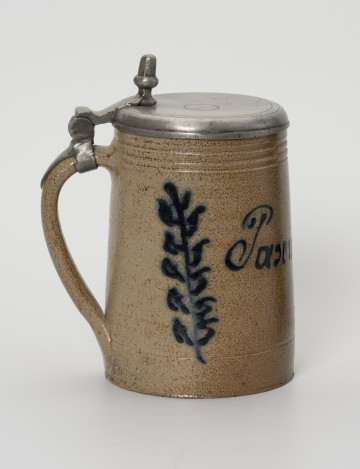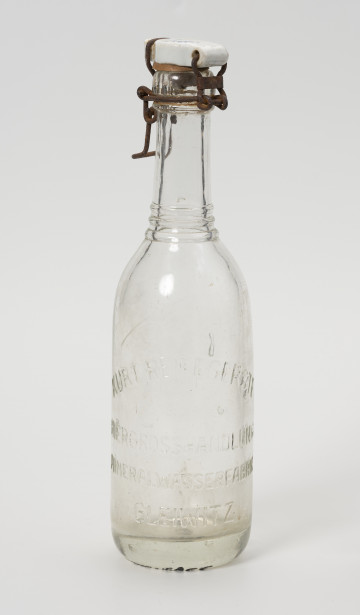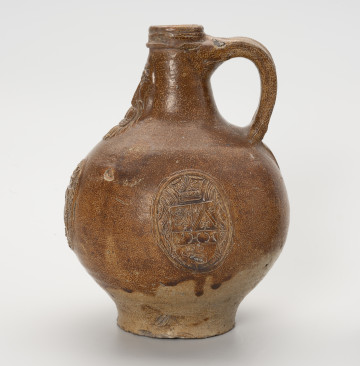
Beer stein
1840 — 1860
National Museum in Szczecin
Part of the collection: Folk ceramics
The jug, crafted in a potter's workshop by an unknown craftsman, was glazed on both sides. The glass glaze, probably due to an admixture of manganese oxide or nickel, gave the outer walls of the vessel a very deep brown tone, tending towards black. On the inside, its thinner layer produces a shade of brown tending towards dark purple, suggesting that, instead, manganese oxide was used for the glazing, at least of this surface. The jug was fitted with a tin lid, standard for this type of object, complete with a special bolt, sometimes called a finger, for easier lifting. The lid may indicate that the jug was intended to store and serve beer. During the feast, beer was poured from the jug into tankards, which may also have had tin lids. According to both former and current beer drinkers, this made the beverage more palatable, as beer consumed from vessels opened only for drinking retains its qualities for longer. With its elegant, slender form, the relatively large jug was probably not a cheap vessel. They must have been the work of an experienced potter, demonstrated not only by the form achieved on the potter's wheel but also by the way the glaze was laid. In order for the vessel to have a smooth, even, and homogeneous colour glaze after firing, the kiln had to be cleaned first of any dirt and residues of other glazes. Then the vessels had to be spaced at appropriate distances on the kiln shelves and fired twice at a temperature determined by the type of glaze. Each firing should have a duration of a couple of hours while controlling the temperature increase. Then it was on to the vessel cooling stage, which also required patience and experience. Opening the kiln too quickly caused the glazing and even whole vessels to crack. Iwona Karwowska
Author / creator
Object type
pitcher, jug
Technique
pottery techniques, throwing (pottery technique), casting, fine detail finishing, soldering
Material
ceramic, glazing, tin
Origin / acquisition method
legal transfer
Creation time / dating
Creation / finding place
Owner
Muzeum Narodowe w Szczecinie
Identification number
Location / status

1840 — 1860
National Museum in Szczecin

1900 — 1945
National Museum in Szczecin

1600 — 1699
National Museum in Szczecin
DISCOVER this TOPIC
Castle Museum in Łańcut
DISCOVER this PATH
Educational path